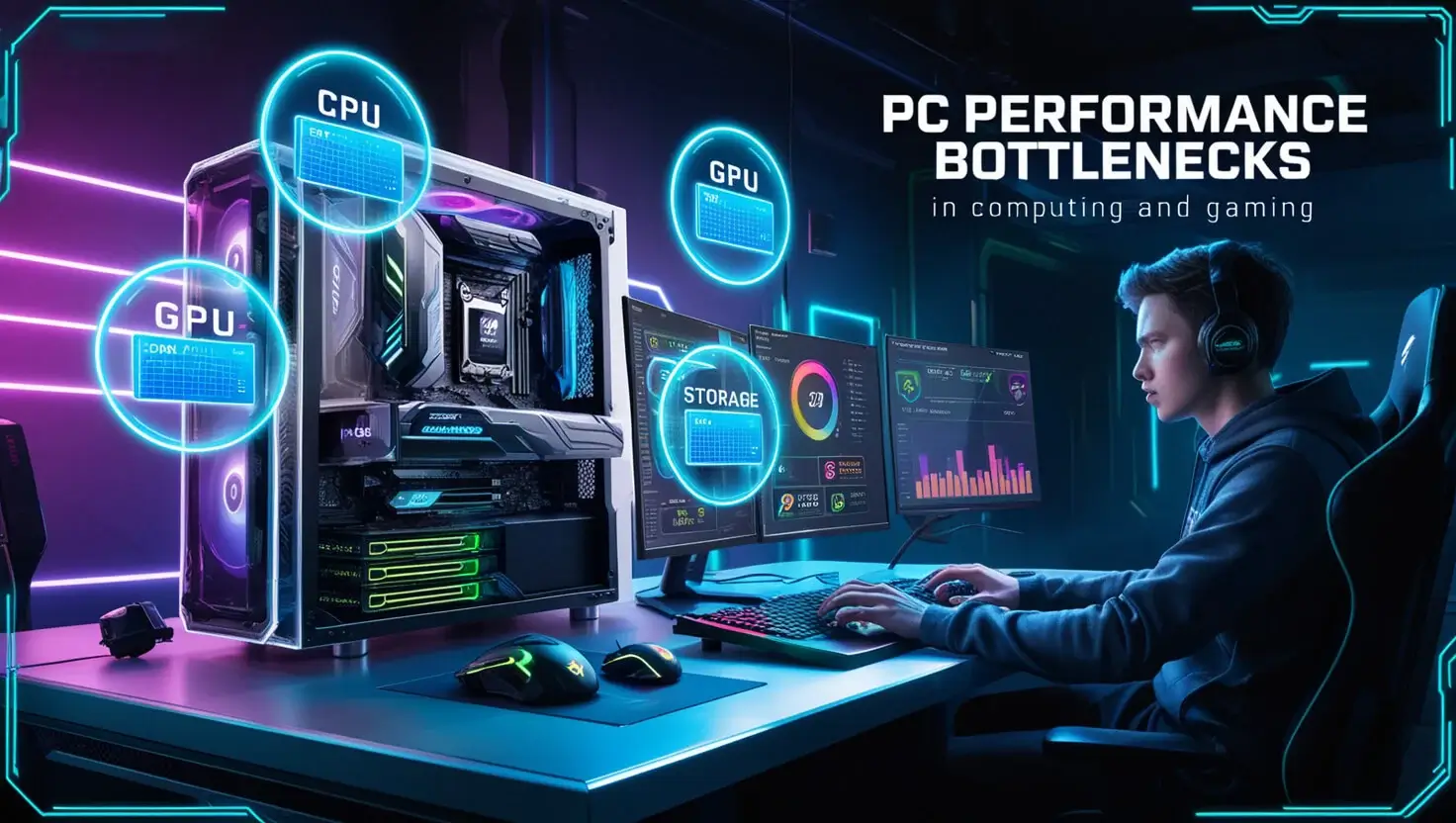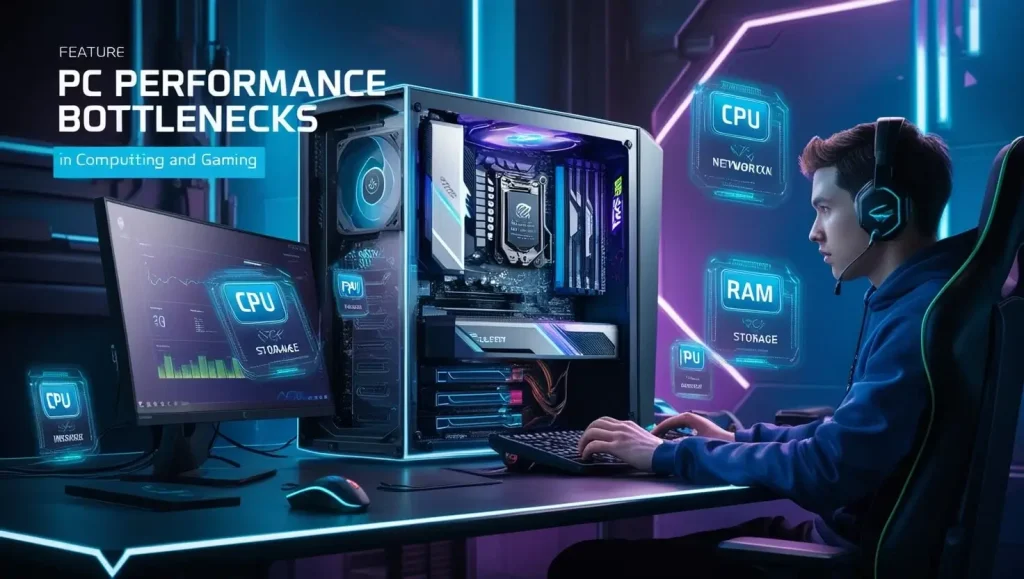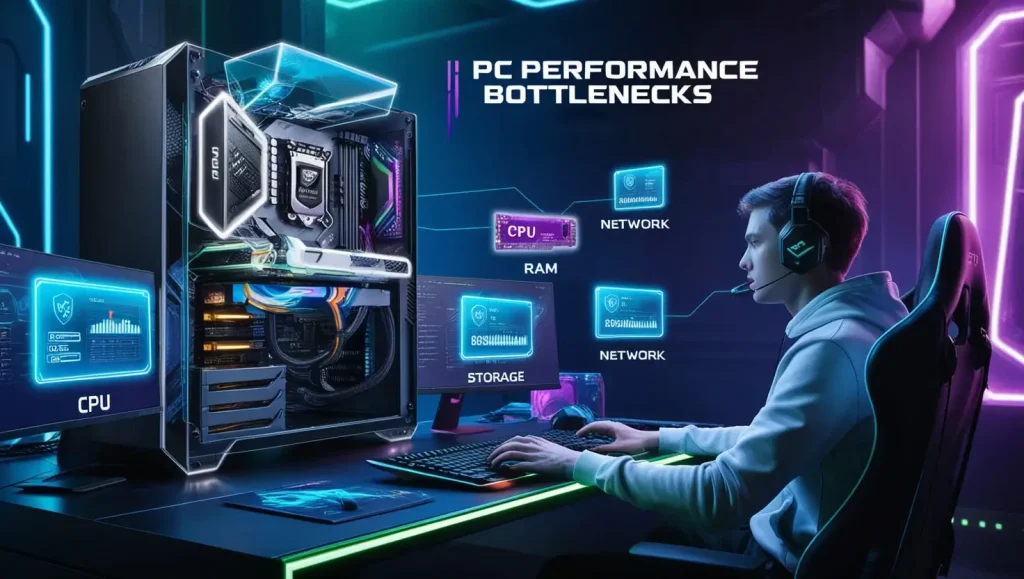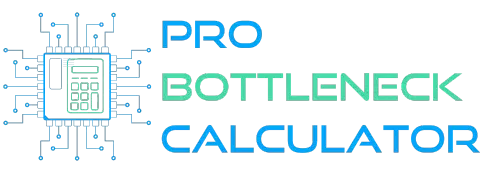How to Check Bottleneck | A Comprehensive Guide

When it comes to optimizing your PC’s performance, bottlenecks are one of the most important factors to understand and address. You’ve likely heard the term “bottleneck” thrown around, but what does it mean, and how can you check if your system is bottlenecked? This article will guide you through identifying and fixing system bottlenecks, ensuring your computer runs as efficiently as possible.
What is a Bottleneck in Computing?
In computing, a bottleneck occurs when one component limits the performance of other components. For example, if your CPU is too weak to handle the data processed by your GPU, the entire system’s performance suffers. Try our Bottleneck Calculator to figure out exactly where the bottleneck might be.
Why Bottleneck Matters
Bottlenecks can drastically reduce your PC’s performance, causing slowdowns, stuttering in games, and inefficient multitasking. Ignoring bottlenecks could mean wasting your hardware’s potential, leading to a subpar experience, especially if you’re gaming, editing videos, or performing resource-intensive tasks.
Identifying the Cause of Bottlenecks
Not all bottlenecks are created equal, and diagnosing one can be tricky. You need to understand the key areas where bottlenecks can occur.
Common Bottleneck Areas:
- CPU: Central Processing Unit, responsible for general system tasks.
- GPU: Graphics Processing Unit, handles rendering and video tasks.
- RAM: Random Access Memory, deals with active tasks and system processes.
- Storage: Hard drives or SSDs, where data is stored and retrieved.

What to Look for in CPU and GPU Bottlenecks
The most common bottlenecks occur in the CPU and GPU. When either is mismatched in power, one will struggle to keep up with the other, causing lag, low frame rates, or long processing times.
Memory and Storage Bottlenecks
RAM and storage also play significant roles in overall system performance. Too little RAM can slow down your system, especially when multitasking, while slow storage can lead to long load times in games or applications.
How to Check for CPU Bottleneck
To detect if your CPU is holding you back:
- Open Task Manager on Windows or Activity Monitor on macOS.
- Under Performance, monitor your CPU usage while running demanding applications or games.
- If CPU usage is constantly at or near 100%, while other components (like GPU) are under-utilized, then you’re likely experiencing a CPU bottleneck.
- Tools like CPU-Z and HWMonitor can give you more detailed information about your CPU’s performance.
How to Check for GPU Bottleneck
To check if your GPU is causing performance issues:
- Use monitoring software like MSI Afterburner or GPU-Z to track your GPU usage.
- If your GPU usage hits 100% while the CPU usage remains low, you’re experiencing a GPU bottleneck.
- You can also check frame rates during gaming. If lowering the resolution improves performance significantly, your GPU might be the limiting factor.
- For quick solution you can read more about how to reduce GPU bottleneck.
How to Check for RAM Bottleneck
If your system feels sluggish, especially during multitasking:
- Open Task Manager in Windows or Activity Monitor in Mac and check your memory usage.
- If memory usage is consistently above 80%, you may need more RAM.
- Symptoms of a RAM bottleneck include system stuttering, slow program launch times, and the need for frequent disk swapping.
How to Check for Storage Bottleneck
Storage bottlenecks are often detected through:
- Resource Monitor (Windows) or Disk Utility (Mac), which can show you disk activity and usage.
- Long file transfer times or system lags when opening applications can be a sign of an HDD bottleneck. Upgrading to an SSD is often the best solution.
- Tools like CrystalDiskInfo can provide detailed information about the health and performance of your storage device.

How to Check for Network Bottleneck
Network bottlenecks occur when your internet connection is slower than expected:
- Run a speed test on internet speed testing tool to check if your download/upload speeds match your internet plan.
- Check network activity in Task Manager to see if any programs are hogging bandwidth.
- For a deeper dive, tools like NetLimiter can monitor network usage more closely.
How to Diagnose Bottlenecks Using Benchmarking Tools
Benchmarking tools provide a clear picture of your system’s overall performance. Use tools like:
- 3DMark: For gaming performance and GPU tests.
- Cinebench: For CPU benchmarking.
- PassMark: For a broad range of system performance tests.
If your system is running smoothly without any bottlenecks, it’s still a good idea to learn how to avoid bottlenecks. This knowledge will help you keep your PC performing well in the future and prevent potential slowdowns.
How to Fix Bottlenecks Once Identified
Once you’ve pinpointed the bottleneck, here’s how to fix it:
Fixing CPU Bottleneck:
If your CPU is causing a bottleneck, consider upgrading to a faster processor. Alternatively, you can reduce the CPU load by closing unnecessary background applications or services.
Optimizing software and disabling auto-start programs can also help lighten the CPU’s workload.
Fixing GPU Bottleneck:
A GPU bottleneck occurs when your graphics card can’t keep up with the demands of your system, especially in gaming or video rendering. To fix this, try lowering in-game settings like resolution, textures, and anti-aliasing to reduce the load on your GPU.
If your current GPU is outdated or underpowered, upgrading to a newer, more powerful GPU is often the best solution.
Fixing RAM Bottleneck:
If your system is running out of memory, you’ll experience slower performance, stutters, and excessive swapping to disk (especially noticeable on HDDs). The simplest solution to a RAM bottleneck is to upgrade your system’s RAM by adding more memory.
For most users, upgrading to at least 16GB of RAM is recommended for optimal performance in gaming, multitasking, and professional applications. Additionally, you can free up RAM by closing unnecessary programs or using lighter software versions.

Fixing Storage Bottleneck:
If slow load times or file transfer speeds are plaguing your system, you might be dealing with a storage bottleneck. Upgrading from a traditional hard drive (HDD) to a solid-state drive (SSD) is one of the most impactful upgrades you can make to your system.
SSDs offer significantly faster read and write speeds compared to HDDs. Also, ensure your drives are not fragmented, especially if you’re using an HDD—defragmentation can help improve performance.
Network Bottleneck:
If your internet connection seems to be slowing down your system’s performance, it’s time to address the network bottleneck. This could be caused by slow Wi-Fi speeds, excessive network traffic, or a weak internet connection.
Try upgrading to a faster internet plan, switching to a wired Ethernet connection, or optimizing your router’s settings for better performance. You can also reduce network congestion by limiting background apps that are consuming bandwidth.
